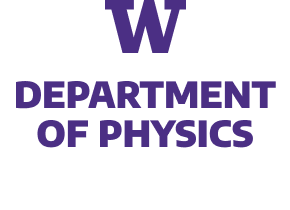A new quantum algorithm for preparing the initial state (wavepackets) of a quantum field theory scattering simulation is introduced. This method extends recent techniques for preparing W states using mid-circuit measurement and feedforward to efficiently create wavepackets. The required circuit depth is independent of wavepacket size, representing a superexponential improvement over previous methods. Explicit examples are provided for one-dimensional Ising field theory, scalar field theory, the Schwinger model, and two dimensional Ising field theory. The circuits that prepare wavepackets in one-dimensional Ising field theory are used to simulate scattering on 100 qubits of IBM’s quantum computer ibm_marrakesh. Quantum simulations are performed at a center of mass energy above inelastic threshold, and measurements of the energy density in the post-collision state reveal the production of new particles. A novel error mitigation strategy based on energy conservation enables accurate results to be extracted from circuits with up to 6,412 two-qubit gates. The prospects for a near-term quantum advantage in simulations of scattering are discussed.
We would like to thank Ivan Chernyshev, David Simmons-Duffin, Johnnie Gray, Ash Milsted, Martin Sav- age and Federica Surace for helpful discussions. RF and JP acknowledge support from the U.S. Department of Energy QuantISED program through the theory consortium “Intersections of QIS and Theoretical Particle Physics” at Fermilab, from the U.S. Department of Energy, Office of Science, Accelerated Research in Quantum Computing, Quantum Utility through Advanced Computational Quantum Algorithms (QUACQ), and from the Institute for Quantum Information and Matter, an NSF Physics Frontiers Center (PHY-2317110). RF additionally acknowledges support from a Burke Institute prize fellowship. NZ acknowledges support provided by the DOE, Office of Science, Office of Nuclear Physics, InQubator for Quantum Simulation (IQuS) under Award Number DOE (NP) Award DE-SC0020970 via the pro- gram on Quantum Horizons: QIS Research and Innovation for Nuclear Science. NZ is also supported by the Department of Physics and the College of Arts and Sciences at the University of Washington. MI acknowledges support provided by the Quantum Science Center (QSC), which is a National Quantum Information Science Research Center of the U.S. Department of Energy. JP acknowledges funding provided by the U.S. Department of Energy Office of High Energy Physics (DE-SC0018407), the U.S. Department of Energy, Office of Science, Accelerated Research in Quantum Computing, Fundamental Algorithmic Research toward Quantum Utility (FAR- Qu), and the U.S. Department of Energy, Office of Science, National Quantum Information Science Research Centers, Quantum Systems Accelerator. The computations presented in this work were conducted in the Resnick High Performance Computing Center, a facility supported by the Resnick Sustainability Institute at Caltech and also enabled by the use of advanced computational, storage and networking infrastructure provided by the Hyak supercomputer system at the University of Washington. RF and NZ acknowledge the use of IBM Quantum Credits for this work. The views expressed are those of the authors, and do not reflect the official policy or position of IBM or the IBM Quantum team.


